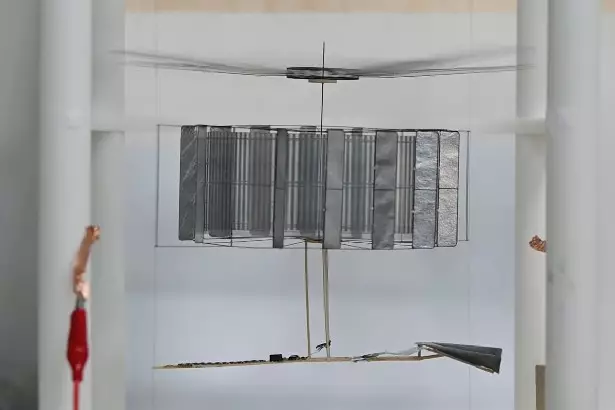The CoulombFly drone with solar panels can fly for an unlimited amount of time under the sun
28.07.24
Researchers from the Nanyang Technological University in Singapore (NTU Singapore) have developed a drone called CoulombFly that can hover autonomously in the presence of sunlight. This innovative drone combines solar panels, a voltage converter and an electrostatic motor that rotates a propeller similar to a helicopter. All components of the drone are tuned for an optimal balance of efficiency, weight and ability to absorb sunlight.
CoulombFly is a research prototype that has many limitations. At the moment, there is no control hardware on board, so the drone can only drift with the wind. The components of the drone are very thin and fragile, which makes it one of the lightest in the world – its weight is only 4.21 g.
Most drones use electromagnetic motors that include heavy metal coils. CoulombFly’s developers decided to focus on creating a lightweight electrostatic motor that uses the forces of gravity and charge repulsion to spin. The motor consists of an inner ring of stationary charged plates (stator) made of thin carbon fiber covered with aluminum foil, and a ring of 64 rotating plates. When the plates in the outer ring are charged, the opposite charge of the adjacent stator plates starts the rotation.
The system requires a small amount of current, but a high voltage between the plates. A screw with a diameter of 10 cm with 8 blades creates a lifting force of 5.8 g, which determines the design conditions of all other components.
The solar cells of the drone are made of a thin film of gallium arsenide, which provides an energy conversion efficiency of up to 30% compared to more than 20% in other materials. Because batteries provide high current but low voltage, the researchers developed a series of voltage converters that step up the voltage from 4.5 to 9.0 kV. Although the conversion efficiency is only 24%, these converters weigh only 1.13 g.
The CoulombFly design includes a cylindrical propeller engine and a solar cell platform balanced by an energy converter. During testing, the drone took off and hovered for over an hour in sunlight, requiring 0.568 watts of power to fly. Considering the total weight of 4.21 g, this means an efficiency of 7.6 g/W. The motor requires only 0.14 W, giving it an efficiency of more than 30 g/W.
In the future, it is possible to add other components, such as a control system, which will expand the functionality of the drone.
Don't miss interesting news
Subscribe to our channels and read announcements of high-tech news, tes
Review of Samsung Galaxy A36 and Galaxy A56 smartphones: in a shadow of light

The Samsung Galaxy A36 and Galaxy A56 have equally good displays, large batteries, and support for software updates for 6 years. Let’s talk in more detail about what else makes them interesting.
YouTube will create free background music using artificial intelligence artificial intelligence music YouTube
The feature is being rolled out in stages and is available to creators who are connected to the YouTube Partner Program and have access to Creator Music.
Trump’s tariffs will not apply to smartphones and computers business smartphone USA
Smartphones and computers are no longer subject to “reciprocal tariffs,” according to updated U.S. Customs guidelines.


